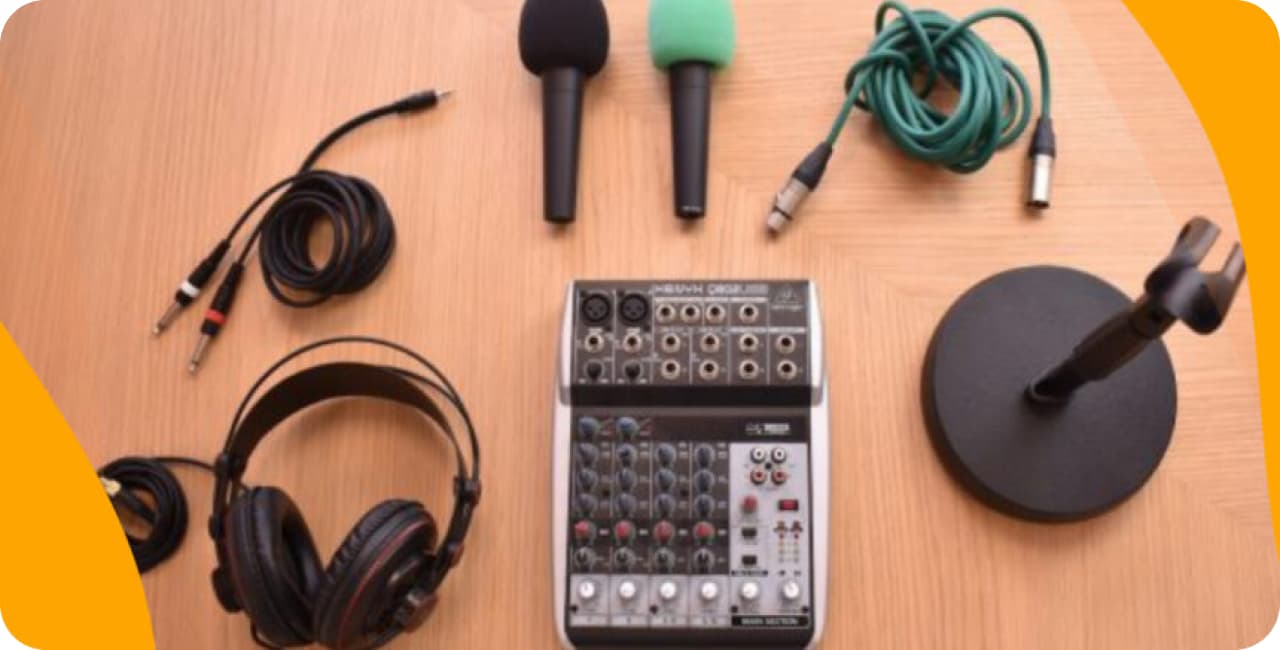

Welcome to the world of radio broadcasting, where every voice has the power to captivate and inspire. Whether you’re a seasoned DJ, a passionate music enthusiast, or a budding podcaster, the allure of sharing your voice with the world is undeniable. And what better way to embark on this exhilarating journey than by creating your own home radio studio?
In this comprehensive guide, we’ll walk you through the process of setting up a professional-grade radio studio in the comfort of your own home. From selecting the right equipment to optimizing your space for optimal sound quality, we’ll cover everything you need to know to get started on your broadcasting adventure.
Join us as we explore the essential tools, techniques, and tips for crafting a home studio that not only meets but exceeds the standards of professional radio broadcasting. Whether you dream of hosting your own talk show, spinning the latest tracks, or conducting in-depth interviews, your home radio studio is the gateway to bringing your vision to life.
So, let’s dive in and unlock your potential as a broadcaster. With the right guidance and a passion for sharing your voice, the possibilities are endless. Get ready to ignite the airwaves and make your mark on the world of radio!
In the following three articles, follow our step-by-step guide to help you create, assemble and broadcast from your own home radio studio.


Depending on the number of hosts on your own radio station, you may need more or less equipment. To comply with an accurate and accessible budget, we’ve planned this setup with two hosts and one external caller.
Your home radio studio is where your voice finds its audience. To make sure it’s heard loud and clear, you need to invest in some essential equipment:
Achieving the perfect sound is about more than just the hardware. It’s about how you bring it all together. Here are some tips to ensure your studio setup is spot on:
Your studio isn’t just a collection of equipment. It’s a creative hub. Personalize your space to make it somewhere you’ll love spending time:
By integrating these key elements into your home radio studio, you’ll create a space that’s both functional and personal. A studio that’s tailored to your needs encourages not just great broadcasts, but a passion for the craft of radio itself.
Remember, the art of radio is more than just talking into a mic; it’s about creating an experience, a moment, and a connection with every listener. Your home studio is where it all begins.
In the orchestra of radio broadcasting, cables are the unsung conduits of harmony. Ensuring clear transmission of sound, they are the lifelines that connect your array of equipment into one symphonic ensemble.
Quality cables may seem like a small part of your setup, but they make a vast difference in the sound that reaches your audience’s ears. It’s an investment in durability and audio quality that any serious broadcaster should prioritize.
The tactile and the tangible bring comfort and efficiency to your radio domain. From microphone stands to headphones, these accessories are pivotal for creating an ergonomic and focused broadcasting environment.
Finally, your home radio studio should be a reflection of your personal brand and a beacon of inspiration. It’s where practicality meets personality:
In conclusion, building a home radio studio is a journey that blends passion with technology, creativity with clarity, and personality with professionalism. The equipment like mixers, microphones, cables, and accessories—forms the backbone of your broadcasting capability. Yet, it is your unique touch that will make your studio not just a collection of hardware, but a haven for your voice and vision.
As you embark on this adventure, remember that the quality of your broadcast is a reflection of both your dedication to the craft and the thoughtfulness put into selecting your equipment. The Behringer Xenyx Q802 USB, the Behringer XM8500 Ultravoice microphones, and the Beyerdynamic DT-770 Pro headphones are not just tools. They are extensions of your passion for radio broadcasting, enabling you to produce content that resonates with your audience.
Moreover, the space you create—cultivated with attention to acoustics, comfort, and inspiration—will serve as the stage for your creative expression. Here, amid the glow of your studio lights and the comfort of your chair, your content comes to life, connecting with listeners around the world.
Take pride in your setup and enjoy the process of building a space that is truly yours. With each broadcast, you’re not just sharing sounds over the airwaves; you’re creating experiences, fostering community, and building a legacy one show at a time.
Dive into the world of radio with confidence and let your home radio studio be the launching pad for your broadcasting dreams. Your audience awaits—on air and online.
If you want more informations about creating your own radio show, you can go further with this article.
Do you now have your equipment? It’s time to move onto Part 2!
You’ll need a professional microphone, quality headphones, a mixing desk, necessary cables like XLR, and a microphone stand.
Invest in a high-quality microphone, use a mixer with good preamps, employ acoustic treatment in your room, choose professional headphones, and maintain a stable internet connection.
Yes, prioritize key equipment, look for budget-friendly alternatives, start with basic software, and enhance your studio gradually.
Mixing desks are central to a home studio setup as they allow for combining different audio sources, such as microphones, music, and sound effects, for a professional broadcast.
Yes, you’ll need broadcasting software to manage your audio sources, schedule broadcasts, and stream your content online. There are various options available, from free to paid, depending on your needs and budget.
Acoustic treatment involves adding materials like foam panels or bass traps to absorb sound reflections and reduce reverberation in your room. You can also use rugs, curtains, and furniture to help dampen sound and create a more controlled environment.
Absolutely! With the right setup, including a stable internet connection and streaming software, you can broadcast live shows from your home studio to listeners around the world in real-time.
Engage with your audience by encouraging listener interaction through phone-ins, text messages, or social media. Respond to comments and questions live on air, and consider hosting contests or giveaways to keep listeners engaged and entertained.
There are several ways to monetize your broadcasts, including advertising, sponsorships, donations, and selling merchandise or premium content. Build a loyal audience, provide valuable content, and explore different revenue streams to generate income from your broadcasts.
Live radio broadcasting requires a stable and high-quality software encoder to ensure seamless audio streaming…
With the rise of digital communication, educational institutions are increasingly exploring new ways to engage…
Taking live calls on your radio show is a great way to connect with your…
If you're running a radio station (or thinking of starting one), you've probably heard that…
Radio is everywhere. It’s in our cars, our homes, and now, thanks to the internet,…
Recording outdoors can be a rewarding yet challenging endeavor for radio hosts and podcasters. The…